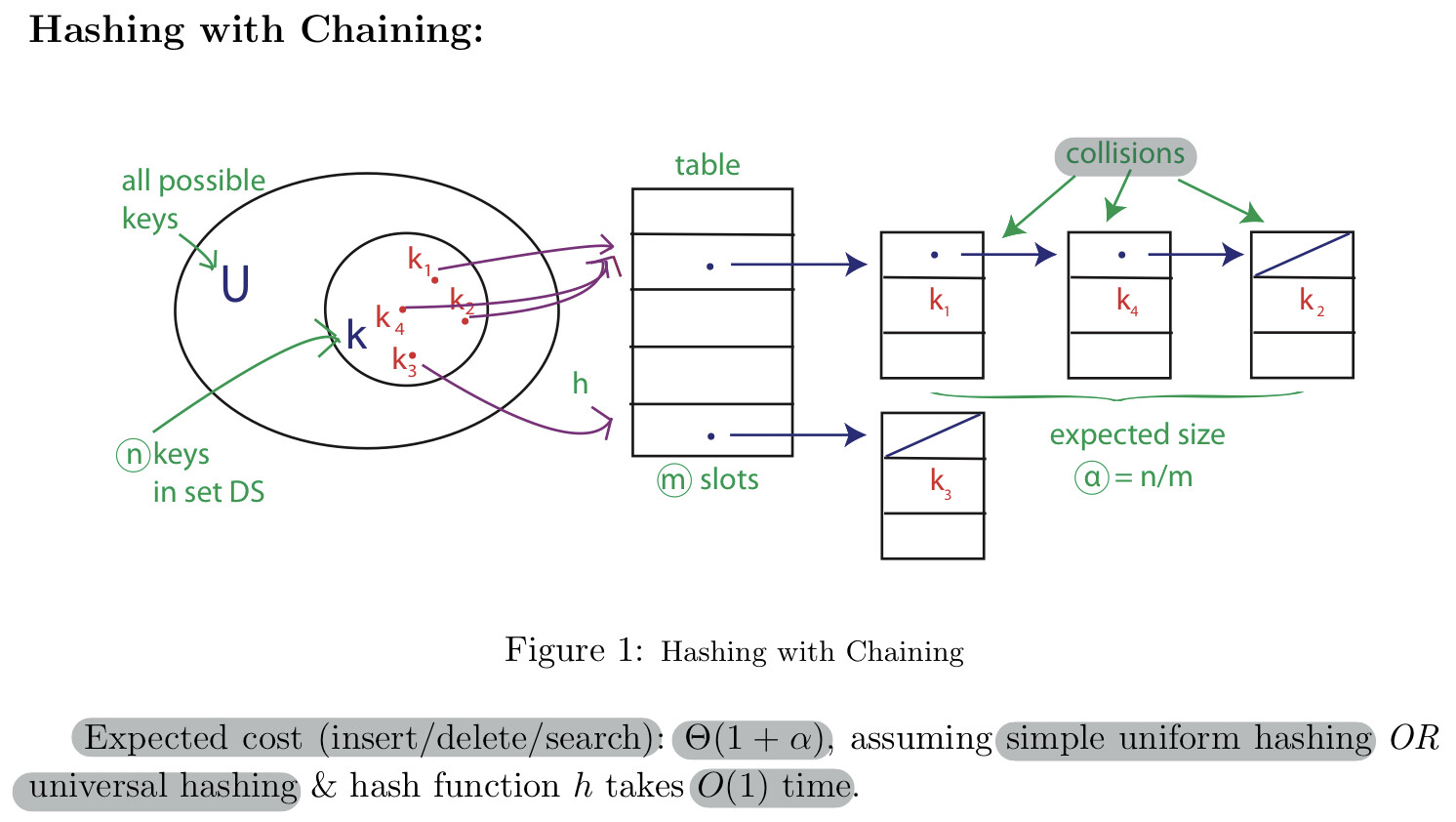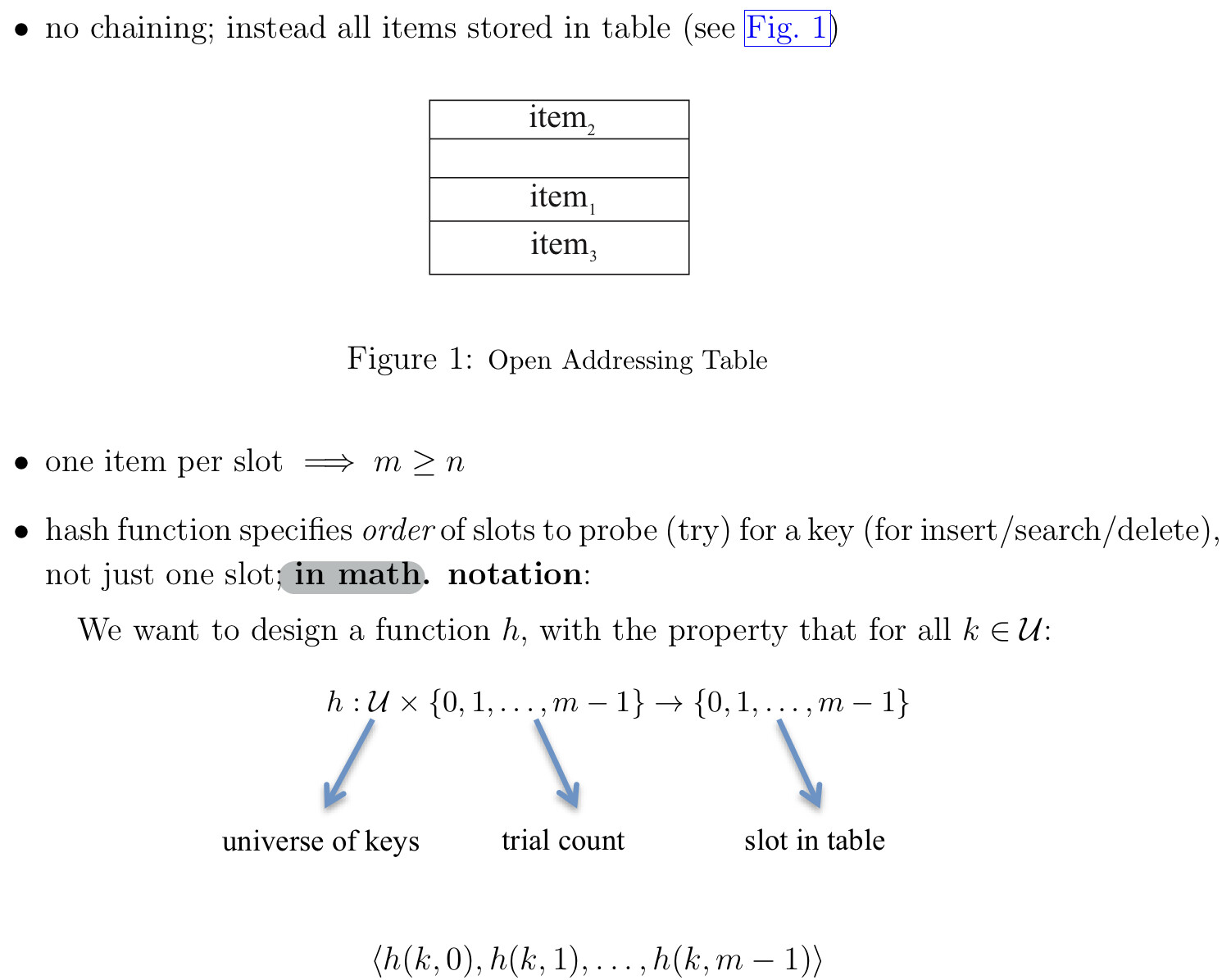Hashing
Hashing
Dictionary problem
ADT- maintain a set of items, each with a key
- insert(item)
- delete(item)
- search(key)
Balanced BSTs solve in O(lg n) time per op. But our goal is O(1) time per op.
Motivation
- compilers & interpreters: name -> variables
- network routers: IP address -> wire
- network server: port number -> socket/app
- virtual memory: virtual address -> physical
Hashing function for dictionary problem
Simple Approach: Direct Access Table
The items would need to be stored in an array, indexed by key(random access)
Problems:
- keys must be nonnegative integers(or using two array, integers)
- large key range => large space - e.g one key of \(\mathrm{2}^{256}\)
Solution
prehashkey to integers, e.g: has(obj) in Python- hashing
- Reduce universe U of all keys down to reasonable size m for table
- idea: m(above=)n
- hash function h

How to deal with collisions?
Chaining
- Search must go through whole list T[h(key)]
- The worst case is \(\Theta (n)\)
Linked list of colliding elements in each slot of table

Open addressing

Simple Uniform Hashing
Each key is equally likely to be hashed to any slot of table, independent of where other keys are hashed.
Performance - The expected running time for search is \(\mathrm(1+\alpha)\), the 1 comes from applying the hash function and random access to the slot whereas the \(\alpha\) comes from searching the list.
Hash Functions
Three methods to achieve the above performance:
- Division Method
- It is inconvenient to find a prime number, and division is slow.
h(k)=k mod m
- It is inconvenient to find a prime number, and division is slow.
- Multiplication Method
- It is faster than division. m =table size = \(\mathrc 2^r\)
- Universal Hashing
- It as good as Multiplication Method and Division Method
Open Addressing vs Chaining
Open Addressing: better cache performance(better memory usage, no pointers needed) Chaining: less sensitive to hash functions
Desirable Properties
- One way(OW)
- Collision-resistance(CR)
- Target collision-resistance(TCR) TCR is weak than CR. If a hash function satisfies CR, it automatically satisfies TCR. There is no implication relationship between OW and CR/TCR.
Source
https://ocw.mit.edu/courses/6-006-introduction-to-algorithms-fall-2011/pages/lecture-notes/